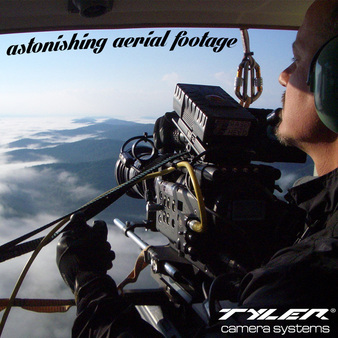
Filmmakers enjoy the many benefits that the Minigyro adds to their finished product. As the winner of the prestigious Vidy Award in 2010, this camera accessory has already achieved legendary status. By using the Minigyro stabilizing camera mount to get the best shot, shaky and unevenness inherent in hand held footage is completely removed. When a 35 millimeter, video or still camera is mounted to a Minigyro, productions obtain smooth footage while in motion on land, sea or in the air.
Of course, professionals know that working with this small and lightweight camera mount has a host of benefits. The ease in which one is able to set up this camera mount only adds to its cost effective status. In an industry where, “time is money” a quick set up and dismount is practically mandatory.
While in use, comfortable grips allow camera operators of all sizes to hold onto the camera mount. Assisted by the inclusion of a locking mechanism and shock absorbing parts, this stabilizing camera mount is able to transform rapidly moving images into visual bliss. Containing 2-Kenyon K8 Gyros, the Minigyro gets the same results as its much larger and heavier counterpart, the Steadicam.
Camera operators quickly come to love the multiple ways in which they can adjust the hand grips of the Minigyro. They have a choice of placing the hand grips next to the camera unit, facing upwards, downwards or looking towards the person operating the camera in the rear. The lock shaft stays tight with a check of the small knob located on the handle itself. This is important not just for the purposes of cinematography, but the safety of your camera crew.
When learning to use the Minigyro for the first time, camera operators are advised to check to be sure the camera they are using is tightly affixed to the camera plate. This is accomplished with the Allen screws contained on the camera mount. To be sure, look to see that the safety latch is placed upwards.
The use of a shock absorber is what makes this stabilizing camera mount so useful when taking video from the side of an inflatable raft or vintage aircraft. For added confidence, listen for the sound of the “snap” as the shock absorber locks into the bottom of your Minigyro. Users appreciate the simplicity of the “Y” strap that tethers the Minigyro to any vehicle, helicopter or seafaring vessel.
Beginners will also want to gather helpful first time tips. Grip the handles securely, but not too tight. Do not pan too quickly to bottom the gyros out. Keep with a slow and smooth pan. For heavier camera packages, attach a shock tube for best results. On summer days or in overheated shooting conditions, turn your camera mount off when not in use. This gives it a chance to cool down and take a break, something you’re likely to want to do yourself.
And please give the gyros at least twenty minutes to spin up fully before operating.
Of course, professionals know that working with this small and lightweight camera mount has a host of benefits. The ease in which one is able to set up this camera mount only adds to its cost effective status. In an industry where, “time is money” a quick set up and dismount is practically mandatory.
While in use, comfortable grips allow camera operators of all sizes to hold onto the camera mount. Assisted by the inclusion of a locking mechanism and shock absorbing parts, this stabilizing camera mount is able to transform rapidly moving images into visual bliss. Containing 2-Kenyon K8 Gyros, the Minigyro gets the same results as its much larger and heavier counterpart, the Steadicam.
Camera operators quickly come to love the multiple ways in which they can adjust the hand grips of the Minigyro. They have a choice of placing the hand grips next to the camera unit, facing upwards, downwards or looking towards the person operating the camera in the rear. The lock shaft stays tight with a check of the small knob located on the handle itself. This is important not just for the purposes of cinematography, but the safety of your camera crew.
When learning to use the Minigyro for the first time, camera operators are advised to check to be sure the camera they are using is tightly affixed to the camera plate. This is accomplished with the Allen screws contained on the camera mount. To be sure, look to see that the safety latch is placed upwards.
The use of a shock absorber is what makes this stabilizing camera mount so useful when taking video from the side of an inflatable raft or vintage aircraft. For added confidence, listen for the sound of the “snap” as the shock absorber locks into the bottom of your Minigyro. Users appreciate the simplicity of the “Y” strap that tethers the Minigyro to any vehicle, helicopter or seafaring vessel.
Beginners will also want to gather helpful first time tips. Grip the handles securely, but not too tight. Do not pan too quickly to bottom the gyros out. Keep with a slow and smooth pan. For heavier camera packages, attach a shock tube for best results. On summer days or in overheated shooting conditions, turn your camera mount off when not in use. This gives it a chance to cool down and take a break, something you’re likely to want to do yourself.
And please give the gyros at least twenty minutes to spin up fully before operating.